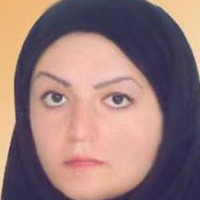New discoveries Architecture from the Late Sassanid and Early Islamic period in the Seimare River Basin (Central Zagros)
The Sassanid dynasty gradually changed its political focus from Fars to the open and strategic land of Mesopotamia during the Middle and Late reign of Shapur II. Definitely, the purpose of this power transfer was to dominate the western borders and the fertile lands of Iraq and Khuzestan. The Central Zagros valleys were highly considered as the closest highlands to the political center during this period for the reasons including being located in the highway linking the imperial center with the political center, and its fertility and environmental diversity. The presence of the settlements from the Sassanid period with relatively higher densities than the environmental capability, being located in inaccessible natural valleys, being away from the main communication routes, and most importantly establishing them simultaneously. (so that all of these areas were on pristine soil and not built for the continuation of previous settlements) .the archaeological evidence that demonstrate these centers as the remnants of Sasanian armies that had been active in the dispersed resistance and continued artistic and architectural life beyond the reach of Muslims. New archaeological excavations led to viewing a part of the architectural remains of aristocratic luxurious houses and residential homes. In addition to evaluating the functionality and age of the newly-explored sites, we consider questions such as how to link between the contemporaneous master buildings in the Simare area in this paper. The results indicated the continuation of the settlements from the Sassanid period until the early Islam; the pottery evidence strongly support this dating as well. Thus, this paper attempts to answer the question that “what is the function of the obtained architectural remains and to what period do they belong?” The present research has been based on the archaeological excavations in recent years, trying to explain architectural works with a descriptive-analytical approach.
- حق عضویت دریافتی صرف حمایت از نشریات عضو و نگهداری، تکمیل و توسعه مگیران میشود.
- پرداخت حق اشتراک و دانلود مقالات اجازه بازنشر آن در سایر رسانههای چاپی و دیجیتال را به کاربر نمیدهد.


